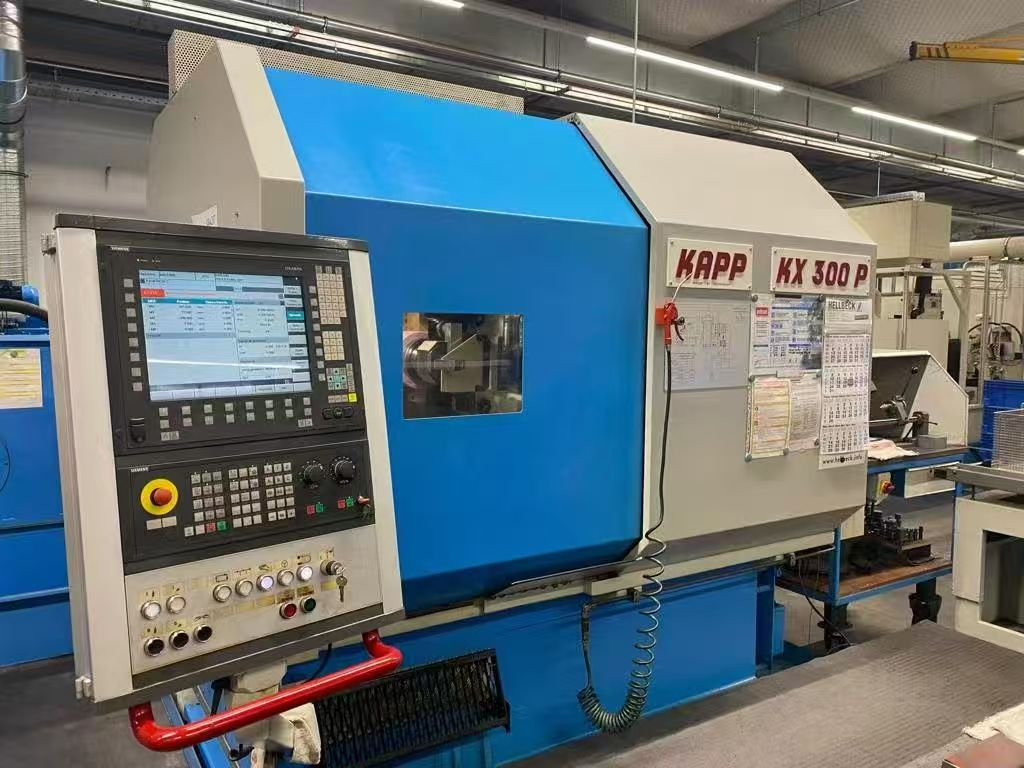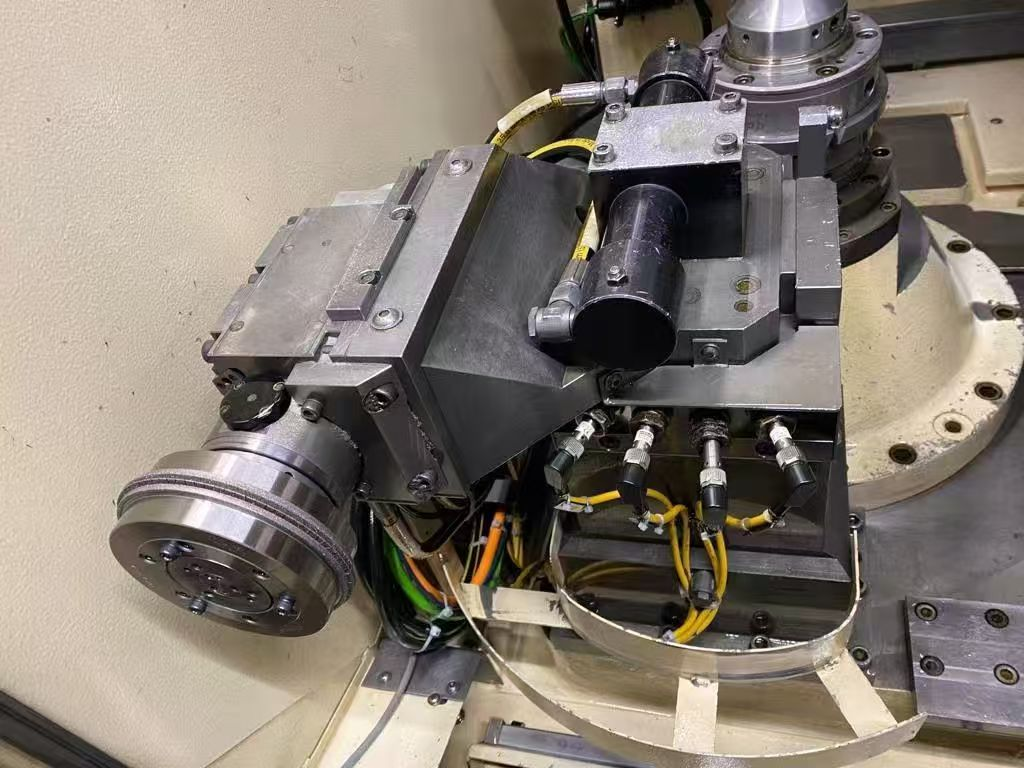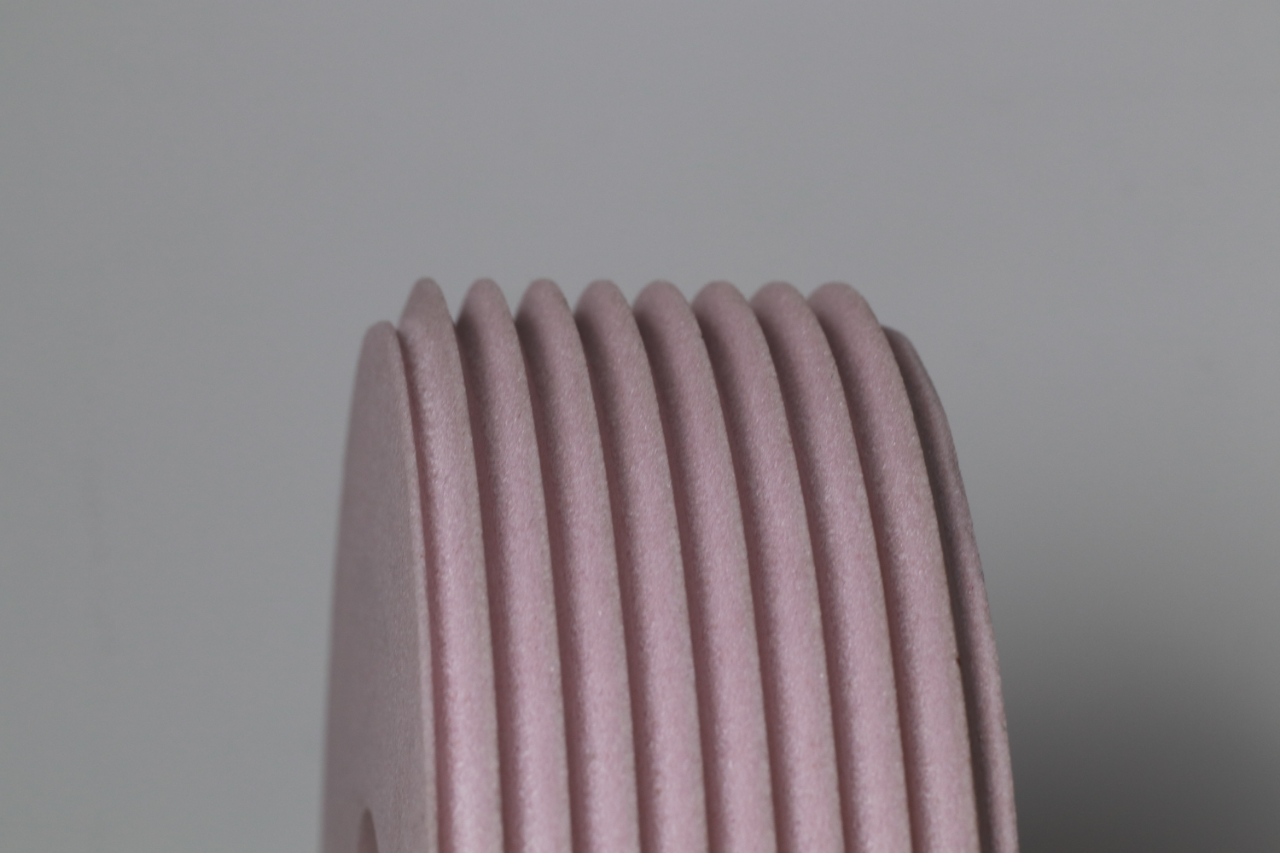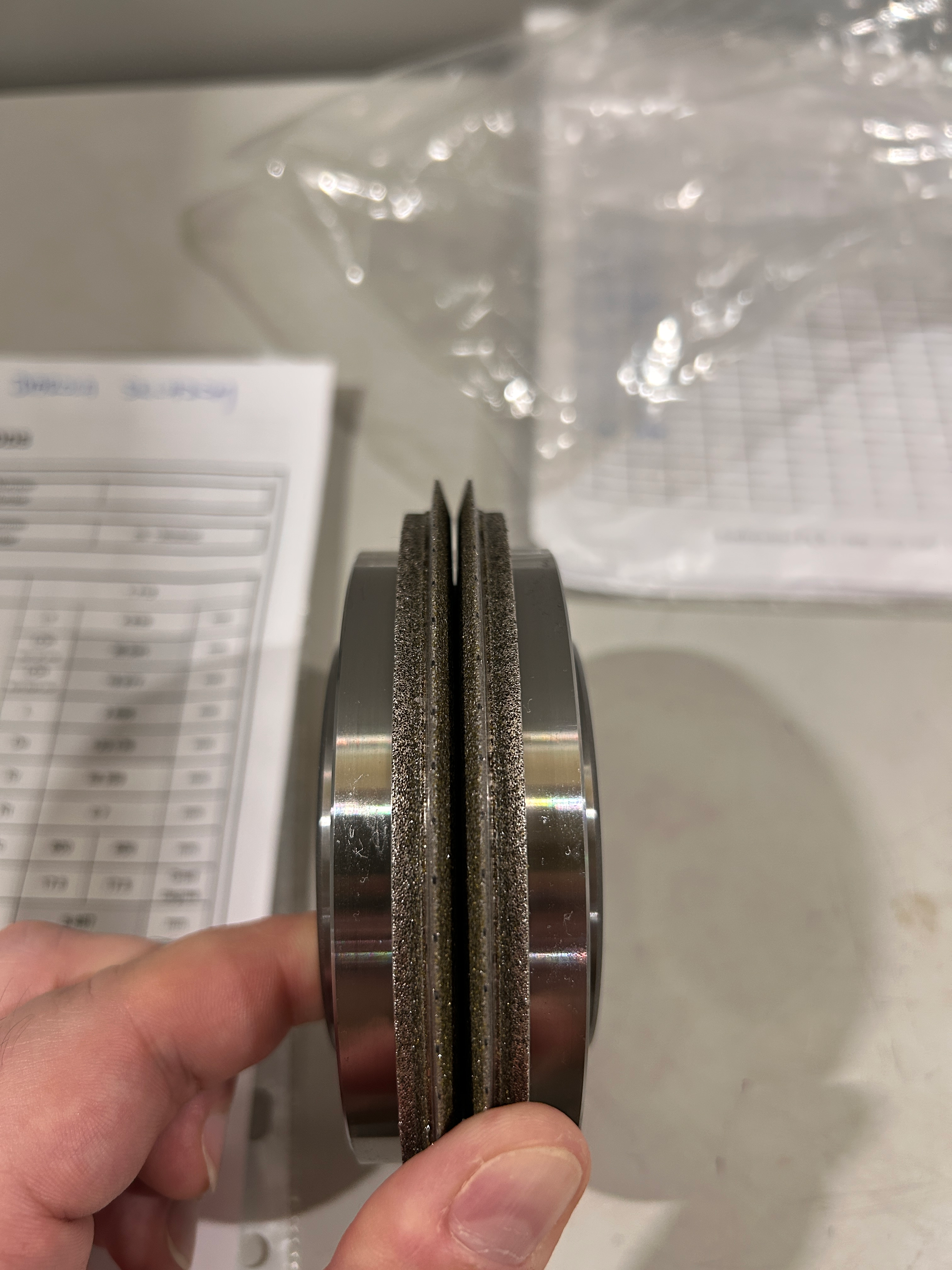Case of Electroplated Diamond Dressing Roller and Chrome Corundum Grinding Wheel for Gear Industry
The gear industry is one of the most important sectors in mechanical engineering, where gears are essential components in machines and vehicles. Gears transfer motion and torque between machine components, and their proper manufacturing and maintenance are crucial for the overall functionality and reliability of various mechanical systems. The process of gear grinding plays a pivotal role in ensuring the precision and durability of gears, and the electroplated diamond dressing roller combined with the chrome corundum grinding wheel is one of the most effective methods used in gear manufacturing.
What is a Gear?
A gear is a mechanical component used to transmit motion and torque between machine parts. It consists of teeth that interlock with another gear’s teeth to transfer force and movement. Gears are commonly used in applications such as automotive transmissions, industrial machinery, and wind turbines.
Key Types of Gears:
-
Spur Gears: These are the most common type of gears with straight teeth and are typically used in parallel shaft systems.
-
Helical Gears: These gears have teeth that are angled, offering smoother operation and higher torque transmission than spur gears.
-
Bevel Gears: Used for transmitting motion between shafts that are angled at 90 degrees.
-
Worm Gears: These gears consist of a screw-like thread that engages with a gear to achieve high torque output.
Gear Materials:
-
Steel: Most gears are made from steel, which offers the necessary hardness and strength for torque transmission.
-
Alloyed Steel: This is used when higher durability and wear resistance are needed.
-
Non-ferrous Materials: For special applications, materials like brass or aluminum alloys may be used.
How to Manufacture Gears?
The manufacturing process of gears involves several key steps to ensure precise dimensions, smooth surfaces, and reliable performance. These steps include casting, forging, machining, and finishing operations such as gear grinding.
1. Casting and Forging
-
Gears can be cast or forged from a variety of materials depending on the application. Casting is used for complex shapes, while forging is used for stronger, more durable gears.
2. Machining
-
Hobbing: This is the most common method for cutting gears. A cutting tool (hob) rotates with the gear blank to cut teeth into the gear.
-
Shaping: Involves using a shaping tool to cut the teeth.
-
Milling: Milling is also used for machining certain types of gears, especially when teeth are shaped on gear blanks.
-
Broaching: Used to create teeth with a single tool, broaching is highly effective for gears with small diameters.
3. Grinding
-
After initial machining, gear grinding is performed to improve the accuracy of the gear teeth and surface finish. The final grinding process provides the required precision in gear geometry, particularly for high-performance gears in automotive, aerospace, and industrial applications.
4. Heat Treatment
-
Gears are often heat-treated to improve their hardness and durability. This can involve processes such as tempering or quenching, which enhance the strength of the gear material and make the teeth more resistant to wear and stress.
How to Select Grinding Wheel for Gear Grinding?
Selecting the correct grinding wheel is crucial for efficient and precise gear grinding. Different types of grinding wheels are used for different applications, and choosing the right one ensures optimal performance in gear manufacturing.
1. Grinding Wheel Type
-
Chrome Corundum Grinding Wheel: This is the most commonly used grinding wheel in the gear industry, especially for rough grinding and finishing operations. It has a high wear resistance and is effective in cutting through hard materials.
-
Diamond Grinding Wheel: Used for grinding high-precision gears, diamond wheels are perfect for hard and brittle materials like high-speed steel (HSS), carbide, and PCD (Polycrystalline Diamond).
2. Abrasive Material
-
Aluminum Oxide (Corundum): This is commonly used for general-purpose grinding, especially for softer materials. It is ideal for chrome corundum wheels used in gear grinding.
-
CBN (Cubic Boron Nitride): CBN is used for high-hardness materials such as steel or cast iron. It is more durable than conventional abrasives and is widely used in the finish grinding of gears.
3. Bond Type
-
Resin Bond: Provides flexibility and is commonly used for fine grinding operations.
-
Vitrified Bond: Known for its rigidity and strength, it is perfect for heavy-duty grinding like rough grinding and heavy stock removal.
-
Electroplated Bond: Offers high precision and is effective for finishing gears and maintaining sharp cutting edges.
4. Grit Size
-
The grit size is crucial in selecting a grinding wheel. Coarse grits (e.g., 60-80 grit) are used for material removal, while finer grits (e.g., 100-200 grit) are used for finishing operations to achieve smooth surface finishes.
5. Wheel Shape and Size
-
The wheel shape (e.g., cylindrical, tapered, or flat) and the diameter of the wheel must match the size of the gear being ground. Larger wheels are used for larger gears, while smaller wheels are used for smaller gears.
Advantages of Chrome Corundum Grinding Wheel for Worm Gear Grinding
The Chrome Corundum Grinding Wheel is a popular choice in the gear industry, particularly for worm gear grinding. The properties of this grinding wheel make it ideal for achieving high-precision, high-efficiency grinding of gears. Below are the key advantages of using Chrome Corundum Grinding Wheels for worm gear grinding:
1. High Durability and Wear Resistance
-
Chrome Corundum (also known as aluminum oxide) offers excellent abrasion resistance, which is critical when grinding hard materials like steel or cast iron used in worm gears. The hardness and wear resistance ensure that the wheel maintains its shape and cutting ability over an extended period, reducing downtime for wheel replacements and minimizing the cost of maintenance.
2. Efficient Material Removal
-
Chrome Corundum wheels are designed for rapid material removal, especially during the rough grinding phase of worm gear production. Their abrasive structure allows them to effectively cut through the material while providing good control over the grinding process. This feature significantly increases productivity, making it ideal for high-volume gear manufacturing.
3. High Surface Finish Quality
-
Worm gears require precise teeth profiles and smooth surfaces to ensure efficient power transmission. Chrome Corundum wheels provide a fine surface finish, especially in finish grinding applications. The ability to grind gears to a smooth, high-quality finish reduces friction and enhances the overall performance of the gears, extending their service life.
4. Versatility for Different Applications
-
Chrome Corundum wheels are versatile, making them suitable for a wide range of gear materials, including steel, alloy steel, and cast iron. This adaptability ensures that the same type of grinding wheel can be used across multiple worm gear production processes, helping manufacturers streamline their operations and reduce the need for specialized tools.
5. Thermal Stability
-
Chrome Corundum grinding wheels exhibit good thermal stability, which means they can handle high grinding temperatures without degrading. This is particularly important during worm gear grinding, where high-speed grinding can generate significant heat. Maintaining thermal stability ensures that the wheel remains effective throughout the grinding process and prevents overheating, which could affect the gear’s properties.
6. Cost-Effectiveness
-
Compared to other specialized grinding wheels like diamond or CBN (Cubic Boron Nitride), Chrome Corundum grinding wheels are often more cost-effective, especially for rough grinding tasks. The low cost of the wheel, combined with its ability to provide excellent grinding performance, offers a cost-efficient solution for manufacturers who require reliable results without the high expense of more expensive abrasive materials.
7. Consistency and Precision
-
Consistency in gear manufacturing is crucial, and the Chrome Corundum Grinding Wheel ensures uniformity in the teeth profile of worm gears. By maintaining consistent grinding pressure and a stable cutting action, it helps produce gears with precise geometries, reducing the likelihood of defects and ensuring the gears perform as expected in their respective applications.
8. Reduced Risk of Gear Damage
-
Due to its controlled material removal rate, Chrome Corundum grinding wheels reduce the risk of overheating and material damage during the grinding process. This is particularly important for worm gears, as excessive heat or aggressive grinding can distort the gear’s shape or cause cracks and other forms of damage. The wheel helps maintain integrity during the grinding process.
9. Easy Availability and Wide Compatibility
-
Chrome Corundum wheels are widely available in the market, making them easy to source. They also come in a variety of sizes and specifications, ensuring compatibility with different worm gear grinding machines. This accessibility simplifies the procurement process for manufacturers and ensures they can maintain a steady supply of grinding wheels for their production lines.
10. Reduced Environmental Impact
-
Compared to some other grinding methods, Chrome Corundum Grinding Wheels generate less dust and residue, which can be an environmental concern in certain industries. Additionally, their long lifespan and durable nature reduce the frequency of wheel disposal, making them a more sustainable option in the long term.
How to Dress a Chrome Corundum Abrasive Worm Grinding Wheel?
Dressing a grinding wheel is essential to maintain its cutting performance and ensure that it continues to produce high-precision results. A chrome corundum abrasive worm grinding wheel requires periodic dressing to restore its sharpness and maintain its ability to remove material efficiently.
1. Why Dressing is Important
-
Clogging: Over time, grinding wheels become clogged with material, which reduces their effectiveness and can lead to overheating.
-
Shape Retention: Dressing ensures that the grinding wheel maintains its intended shape, which is critical for consistent grinding quality.
2. Dressing Techniques
-
Mechanical Dressing: Involves using a diamond tool to remove the surface of the grinding wheel and expose fresh abrasive particles.
-
Electroplated Diamond Dressing Roller: An effective method to restore the cutting edges of a grinding wheel. These rollers are coated with electroplated diamond particles and are used to smooth out the surface of the grinding wheel. The electroplated bond ensures that the diamonds stay fixed in place, offering high precision and durability.
3. Dressing Procedure
-
Positioning the Dressing Roller: The electroplated diamond dressing roller is brought into contact with the surface of the chrome corundum wheel. It should be positioned at the same angle as the gear being ground.
-
Grinding Speed and Pressure: The dressing process should be carried out at a controlled speed and pressure to ensure that the grinding wheel is properly dressed without causing damage to the wheel’s surface.
Advantages of Electroplated Diamond Dressing Roller for Dressing Chrome Corundum Grinding Wheel
The electroplated diamond dressing roller offers several key advantages when dressing chrome corundum grinding wheels in the gear industry:
1. High Precision
-
The electroplated diamond dressing roller provides high precision when restoring the grinding wheel’s shape and cutting ability. This precision is critical when grinding gears to ensure that the teeth are finished to the exact geometry required.
2. Durability
-
The electroplated bond in the diamond roller ensures that the diamonds stay firmly in place, even under heavy dressing conditions. This results in longer tool life and reduced downtime for the grinding process.
3. Consistent Surface Finish
-
Regular dressing with a diamond dressing roller ensures that the grinding wheel continues to produce consistent surface finishes, which is essential for maintaining the quality of the gears.
4. Improved Grinding Efficiency
-
Properly dressed grinding wheels work more efficiently, allowing for faster material removal and better surface finishes, leading to improved productivity and reduced cycle times.
5. Versatility
-
The electroplated diamond dressing roller can be used on various grinding wheels, making it a versatile tool for different types of grinding operations in the gear industry.
Case of electroplated diamond dressing roller for dressing Chrome corundum grinding wheel wheel


| Machine | Kapp KX300P |
| Grinding wheel | Chrome corundum grinding wheel wheel |
| Wheel Size | D300*T225 |
| Dresser | electroplate diamond profile dressing roller |
| Workpiece | Worm Gear |
| Material | Carbon steel with Surface carburizing |
—EDITOR: Doris Hu, Alan Wang
—POST: Doris Hu



